money
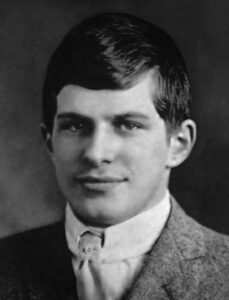
 They say that genius can be the closest thing to crazy, but I don’t really know how true that is. Sometimes I think that when a person is a genius, people drive them crazy. It’s the novelty of the thing, I suppose. People find out that the genius has a super high IQ, and they all seem to want something from them. Many people don’t really care about the genius as a person, just about how they might be able to make money off of them somehow. Not every inventor is a genius, but some of them are, as are some mathematicians, doctors, teachers, writers, and many other people too.
They say that genius can be the closest thing to crazy, but I don’t really know how true that is. Sometimes I think that when a person is a genius, people drive them crazy. It’s the novelty of the thing, I suppose. People find out that the genius has a super high IQ, and they all seem to want something from them. Many people don’t really care about the genius as a person, just about how they might be able to make money off of them somehow. Not every inventor is a genius, but some of them are, as are some mathematicians, doctors, teachers, writers, and many other people too.
Sometimes the demands placed on these geniuses gets to be so heavy, that they might just snap. I don’t mean that they might go insane, although some of them have. The thing that seems to happen most, however, is that they might just decide to disappear. Several geniuses have simply vanished,  including William Sidis (who graduated from Harvard at 16, only to go into hiding, going from city to city and job to job), JD Salinger (author of Catcher in the Rye, who left Manhattan in 1953 to live on a “90-acre compound” in Cornish, NH. He remained there until his death in 2010, at age 91, saying he loved to write, but publishing was a terrible invasion of his privacy), Ettore Majorana (a theoretical physicist was considered one of the most deeply brilliant men in the world by Enrico Fermi, creator of the first nuclear reactor. One day he drained his bank account and simply vanished), David Thorne (an architect received so much attention for his work on jazz giant Dave Brubeck’s house in 1954, that he changed his professional name in the ‘60s to Beverly Thorne, got an unlisted phone number, and didn’t “resurface” until the 1980s), and Nick Gill (who at 21, was the youngest-ever British chef to win a Michelin star. He seemed destined for a life of fame and fortune and was hailed as a culinary genius. One day he told his brother he was going to disappear, and to “please, not look for him,” never to be seen again).
including William Sidis (who graduated from Harvard at 16, only to go into hiding, going from city to city and job to job), JD Salinger (author of Catcher in the Rye, who left Manhattan in 1953 to live on a “90-acre compound” in Cornish, NH. He remained there until his death in 2010, at age 91, saying he loved to write, but publishing was a terrible invasion of his privacy), Ettore Majorana (a theoretical physicist was considered one of the most deeply brilliant men in the world by Enrico Fermi, creator of the first nuclear reactor. One day he drained his bank account and simply vanished), David Thorne (an architect received so much attention for his work on jazz giant Dave Brubeck’s house in 1954, that he changed his professional name in the ‘60s to Beverly Thorne, got an unlisted phone number, and didn’t “resurface” until the 1980s), and Nick Gill (who at 21, was the youngest-ever British chef to win a Michelin star. He seemed destined for a life of fame and fortune and was hailed as a culinary genius. One day he told his brother he was going to disappear, and to “please, not look for him,” never to be seen again).
It isn’t known, as to why these geniuses would decide that they no longer wanted to be a part of the world, nor 
 are they to only people to do this by any means. Nevertheless, they seem to have one thing in common, their genius skill or knowledge seemed to take over their whole life, and people wouldn’t leave them alone, but rather hounded them unmercifully. I think I can understand how that would be enough to make someone want to disappear, but most people don’t actually go so far as to take that step. It is a rather extreme step to take, and for all we know some of these might have been killed or committed suicide. The sad reality for these genius minds is that the fame and constant pressure of celebrity was too much for them, and they just checked out, because the burden of knowledge was just too much for them.
are they to only people to do this by any means. Nevertheless, they seem to have one thing in common, their genius skill or knowledge seemed to take over their whole life, and people wouldn’t leave them alone, but rather hounded them unmercifully. I think I can understand how that would be enough to make someone want to disappear, but most people don’t actually go so far as to take that step. It is a rather extreme step to take, and for all we know some of these might have been killed or committed suicide. The sad reality for these genius minds is that the fame and constant pressure of celebrity was too much for them, and they just checked out, because the burden of knowledge was just too much for them.

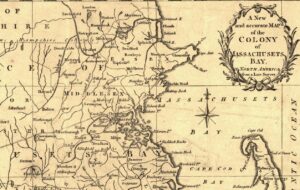 In the late 1600s, Britain and France both owned property in North America, and they were prone to periodic attacks on the colonies belonging to the other. On December 10, 1690, when the Massachusetts Bay Colony launched an ill-fated attack on Quebec, the result was a near-mutiny that forced the Massachusetts Bay Colony to issue the first paper currency in the history of the Western Hemisphere.
In the late 1600s, Britain and France both owned property in North America, and they were prone to periodic attacks on the colonies belonging to the other. On December 10, 1690, when the Massachusetts Bay Colony launched an ill-fated attack on Quebec, the result was a near-mutiny that forced the Massachusetts Bay Colony to issue the first paper currency in the history of the Western Hemisphere.
Sometimes, these “little skirmishes” put the governments in a position of a cash flow problem. They sometimes had to resort to IOUs to pay the men. In 1690, during one such war, Governor William Phips of Britain’s Massachusetts Bay Colony made a promise to his men that he could not keep. Phips was just back from a successful invasion of the French colony of Acadia. When it went so well, he decided to raid Quebec City. For their participation, Phips promised his volunteer troops half the loot. This loot was to be in addition to their usual pay. In those days, the soldiers were usually paid in coins, but sometimes shortages of official currency in the colonies forced armies to temporarily issue IOUs. Sometimes, even that was difficult, for lack of paper, so in one case, the men were actually paid with cut-up playing cards. The troops were then allowed to exchange the playing cards for goods and services until they received their actual pay.
As to Phips…he found himself with a rather large dilemma, because while he made a grand promise, the raid was a failure, when he didn’t manage to take the city. He was forced to return to Massachusetts with a damaged fleet and no treasure. With a shortage of coins and nothing else to pay the troops with, Phips faced a potential mutiny. So…out of options, on December 10th, 1690, the General Court of Massachusetts ordered the printing of a limited amount of government-backed, paper currency to pay the soldiers. It was the first such printing of paper money in North America. A few months later, with tax season approaching, a law was passed removing the limit on how much currency could be printed, calling for the immediate printing of more, and permitting the use of paper currency for the payment of taxes, which seems odd considering it had no value.
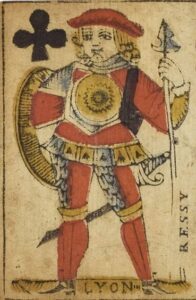
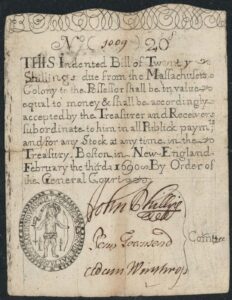 People didn’t trust the paper currency, making it unpopular for anything except paying taxes and before long, it was phased out. Nevertheless, within a few years, paper currency returned to Massachusetts. The Bank of England began issuing banknotes in 1695, also to pay for war against the French, and they became increasingly common throughout the 18th Century. Paper money has continued to cause controversy throughout the early history of the United States, and in many cases, remains so to this day. It was tied to the value of gold for a surprisingly long time, but in 1973 President Richard Nixon officially ended the international convertibility of the US dollar into gold. The printing of paper currency has always been a bit of a shady venture, because it is almost always done without the backing of gold. Without gold to back up the value of the paper currency, the economy is in danger.
People didn’t trust the paper currency, making it unpopular for anything except paying taxes and before long, it was phased out. Nevertheless, within a few years, paper currency returned to Massachusetts. The Bank of England began issuing banknotes in 1695, also to pay for war against the French, and they became increasingly common throughout the 18th Century. Paper money has continued to cause controversy throughout the early history of the United States, and in many cases, remains so to this day. It was tied to the value of gold for a surprisingly long time, but in 1973 President Richard Nixon officially ended the international convertibility of the US dollar into gold. The printing of paper currency has always been a bit of a shady venture, because it is almost always done without the backing of gold. Without gold to back up the value of the paper currency, the economy is in danger.
 I think most of us try to be nice people. We try to do nice things for our friends and loved ones, but what about random acts of kindness for people we don’t know. Most of us really put those things on the back burner, so to speak. It is probably a sad thing that there has to be a day set aside for random acts of kindness, but maybe we all need a reminder once in a while. There are always people who are less fortunate than we are…no matter how bad off we think we are. Most people think that random acts of kindness need to include money, but that isn’t so. The needs of those around us are not always monetary. Sometimes, people simply need a smile at the right moment, because they are feeling down. Other times, money is the need, of course. I think the key is to be aware, and to listen to your own spirit when it comes to hearing about the needs of those around you. If you feel led to do something for someone, act
I think most of us try to be nice people. We try to do nice things for our friends and loved ones, but what about random acts of kindness for people we don’t know. Most of us really put those things on the back burner, so to speak. It is probably a sad thing that there has to be a day set aside for random acts of kindness, but maybe we all need a reminder once in a while. There are always people who are less fortunate than we are…no matter how bad off we think we are. Most people think that random acts of kindness need to include money, but that isn’t so. The needs of those around us are not always monetary. Sometimes, people simply need a smile at the right moment, because they are feeling down. Other times, money is the need, of course. I think the key is to be aware, and to listen to your own spirit when it comes to hearing about the needs of those around you. If you feel led to do something for someone, act  upon that leading, using the appropriate amount of caution of course, because not everyone is nice.
upon that leading, using the appropriate amount of caution of course, because not everyone is nice.
Sometimes random acts of kindness should be anonymous too. I think that applies to most of the time. There is no need for recognition with random acts of kindness. In fact, that is the point of a random act of kindness, to remain anonymous…and even if they see you, they don’t have to know your name. All they have to know is that someone cared enough to do something nice for them. The thing that I always find to be true is that invariably, the person you choose to do something nice for, really needed to know that someone cared right then. We always think that we could not possibly know who needed our help, but I think that there are always telltale signs…even if it is just a feeling we have inside.

I suppose that sometimes, a random act of kindness can bless someone who, for all intents and purposes, doesn’t need any such act of kindness. Maybe there is nothing lacking in their life. Still, can a kindness shown ever be wasted? I don’t think so, because who could need a random act of kindness more than someone who thinks that they only have themselves to count on. We all know people who “don’t need any help” from anyone. To me, that is the saddest of all, because, as the saying goes, “no man is an island.” So today, if you have the chance to, show someone a random act of kindness, and maybe it could become a habit for every day.
 We have all heard of the atrocities that took place in Nazi Germany regarding the Jewish people. And many people might have seen the movie called Schindler’s List. When the movie came out, I did not have a real interest in the old war movies, but I really should have in this one, because it is not your typical war movie. The movie documents the actions of a member of the Nazi Party, who saw something that was morally wrong, and did something about it.
We have all heard of the atrocities that took place in Nazi Germany regarding the Jewish people. And many people might have seen the movie called Schindler’s List. When the movie came out, I did not have a real interest in the old war movies, but I really should have in this one, because it is not your typical war movie. The movie documents the actions of a member of the Nazi Party, who saw something that was morally wrong, and did something about it.
Schindler wasn’t what would be considered a moral upstanding citizen to the Christian way of thinking. He married Emilie Pelzl at nineteen, but was never without a mistress or two. When his family’s business went under, he presided over the the proceedings, and then became a salesman when opportunity came knocking in the form of the war. Schindler was never one to miss a chance to make money. He saw opportunity in Poland, so he marched in on the heels of the SS. Soon, he was deep into the black-market and the underworld..making friends with the Gestapo officials along the way…softening them up with women, money and illicit booze.

It was his newfound connections that helped him acquire the factory in Krakow during the German occupation of Poland, which he ran with the cheapest labor around…namely the Jewish people from the nearby Jewish ghetto. Schindler was a hard man, and didn’t care much about others, but somewhere along the line, something changed. When the Nazis decided to liquidate the ghetto, he persuaded the officials to allow the transfer of his workers to the Plaszow labor camp. I’m not sure what they workers thought of that situation right away, but in the end, to saved them from deportation to the death camps, for which they were grateful.

By 1944, Hitler had become more and more crazed, and all the Jews at Plaszow were to be sent to Auschwitz, but Schindler couldn’t bear to see his workers murdered by Hitler. Schindler decided to take a huge risk, and bribe the officials into allowing him to keep his workers and set up a factory in a safer location in occupied Czechoslovakia. Miraculously, they agreed to let him have his workers, probably thinking of the factory’s production, and not the fact that these Jews would not meet the horrible fate awaiting them in the death camps. So, Schindler gave them a list of his workers, and of course, that is where the name of the movie came from. By the war’s end, Schindler was penniless, but he had saved 1,200 Jews. And that makes him a very rich man, indeed. In 1962, he was declared a Righteous Gentile by Yad Vashem, Israel’s official agency for remembering the Holocaust. Oskar Schindler died on this day, October 9, 1974, and according to his wishes, he was buried in Israel at the Catholic cemetery on Mount Zion.
 Whether you consider Valentine’s Day to be a highly commercialized day, geared toward getting the consumer to spend a bunch of money on silliness, or you see it as a day set aside to celebrate love, everyone who has loved ones in their life, has to deal with it in some way. Perhaps deal with it is a poor choice of words, but there are those who feel like that is exactly what the day is all about…and they have loved ones too. Of course, those same people feel like Christmas, Easter, Mother’s Day, Father’s Day, and all the others are the same commercialized money trap. I don’t really get that. Why not have a day here
Whether you consider Valentine’s Day to be a highly commercialized day, geared toward getting the consumer to spend a bunch of money on silliness, or you see it as a day set aside to celebrate love, everyone who has loved ones in their life, has to deal with it in some way. Perhaps deal with it is a poor choice of words, but there are those who feel like that is exactly what the day is all about…and they have loved ones too. Of course, those same people feel like Christmas, Easter, Mother’s Day, Father’s Day, and all the others are the same commercialized money trap. I don’t really get that. Why not have a day here  and there to celebrate the people who have blessed your life? After all, where would your life be without those wonderful people in it. Sometimes, I think people take their family so much for granted, that they forget how blessed they truly are.
and there to celebrate the people who have blessed your life? After all, where would your life be without those wonderful people in it. Sometimes, I think people take their family so much for granted, that they forget how blessed they truly are.
I get that we are all busy. In fact, that is one reason why we should embrace these days. They remind us to take a moment out of our busy, hectic lives and remember the people who are always there for us…through thick and thin, and I don’t mean just our spouse. Our parents have given up many things to make a better life for their kids; our siblings basically guarantee that we always have friends; our kids, in whose  eyes, we can do no wrong…at least when they are little. We have all of these people, who show us so much love, and then we complain about having to buy them a little box of candy or flowers!! What does that say about us?
eyes, we can do no wrong…at least when they are little. We have all of these people, who show us so much love, and then we complain about having to buy them a little box of candy or flowers!! What does that say about us?
There are also marriages and families that are a little bit more unconventional, who do things like dinner, or handmade gifts, and in reality it is not the gift that counts, but the thought…the sentiment…the love. And most of all, it’s about showing how much they are loved, because after all, it’s the love that matters. And since it is the love that matters, why not show it.

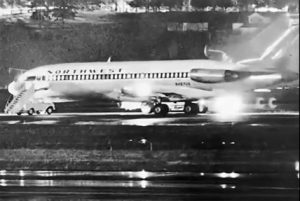 Airplane hijacking isn’t a new thing in our day and age, and usually the hijacker is extremely dangerous and often has plans to crash the plane, but there have been, in times past, some hijackings that weren’t “so bad” in the grand scheme of airplane hijacking, anyway. Sometimes the hijacker really just wanted to use the plane to get them where they wanted to go, planning to release the hostages upon arrival. Of course, hijacking isn’t really a good way to get to your vacation destination, or any other reason for your travel, because you are likely to get shot or arrested for your seemingly innocent attempts.
Airplane hijacking isn’t a new thing in our day and age, and usually the hijacker is extremely dangerous and often has plans to crash the plane, but there have been, in times past, some hijackings that weren’t “so bad” in the grand scheme of airplane hijacking, anyway. Sometimes the hijacker really just wanted to use the plane to get them where they wanted to go, planning to release the hostages upon arrival. Of course, hijacking isn’t really a good way to get to your vacation destination, or any other reason for your travel, because you are likely to get shot or arrested for your seemingly innocent attempts.
Nevertheless, on November 24, 1971, a hijacker calling himself D.B. Cooper commandeered a Northwest Orient Airlines 727 shortly after takeoff. He showed a flight attendant something that looked like a bomb, and informed the crew that he wanted $200,000, four parachutes, and “no funny stuff.” The plane landed at Seattle-Tacoma International Airport, where authorities met Cooper’s demands, which was common back then, and evacuated most of the passengers. Cooper then demanded that the plane fly toward Mexico at a low altitude and ordered the remaining crew members into the cockpit. At 8:13 pm, as the plane flew over the 
 Lewis River in southwest Washington, Cooper parachuted from the plane. The airplane’s pressure gauge recorded the jump. Wearing only wrap-around sunglasses, a thin suit, and a raincoat, Cooper parachuted into a thunderstorm, with winds in excess of 100 mph and temperatures well below zero at the 10,000 foot altitude where he began his fall. The storm prevented an immediate capture, and most authorities assumed he was killed during what they deemed a suicidal jump. No trace of Cooper has ever been found, despite a massive search of the area, and FBI posters, with age analysis.
Lewis River in southwest Washington, Cooper parachuted from the plane. The airplane’s pressure gauge recorded the jump. Wearing only wrap-around sunglasses, a thin suit, and a raincoat, Cooper parachuted into a thunderstorm, with winds in excess of 100 mph and temperatures well below zero at the 10,000 foot altitude where he began his fall. The storm prevented an immediate capture, and most authorities assumed he was killed during what they deemed a suicidal jump. No trace of Cooper has ever been found, despite a massive search of the area, and FBI posters, with age analysis.
In 1980, an eight year old boy uncovered a stack of nearly $5,880 of the ransom money in the sands along the north bank of the Columbia River, five miles from Vancouver, Washington. There was no trace of Cooper’s remains in the area. The money was given back to the boy, and he sold some of the bills as souvenirs. No more of the money has ever been found, on the ground or in circulation. More than four decades later, three amateur scientists working for a group called Citizen Sleuths, think they may have found evidence that would narrow down Cooper’s identity. They believe that he had to be an aerospace engineer or a manager. The scientists said they have been analyzing particles found on a clip-on necktie that Cooper left on his seat…number 18E…before 
 jumping out of the plane. To the naked eye, the piece of fabric was a nondescript black tie from J.C. Penney. But, to the modern-day scientists, the tie was an “incredibly fortunate” piece of evidence in the investigation, because ties are not washed often, so DNA could remain on the tie, and with modern DNA testing, maybe they will be able to figure out who D.B. Cooper really was.
jumping out of the plane. To the naked eye, the piece of fabric was a nondescript black tie from J.C. Penney. But, to the modern-day scientists, the tie was an “incredibly fortunate” piece of evidence in the investigation, because ties are not washed often, so DNA could remain on the tie, and with modern DNA testing, maybe they will be able to figure out who D.B. Cooper really was.

 When we think of train robberies, most of us think of the Old West, and bandits on horseback, riding up along side the train, and jumping on. Then, with guns pointed at everyone, they robbed the train, and left the same way they came in. In fact, I think most of us thought that the days of robbing a train were over, and maybe that played to the advantage of the outlaws, because on August 8, 1963, a group of 15 thieves and 2 key informants pulled off one of the most famous heists of all time.
When we think of train robberies, most of us think of the Old West, and bandits on horseback, riding up along side the train, and jumping on. Then, with guns pointed at everyone, they robbed the train, and left the same way they came in. In fact, I think most of us thought that the days of robbing a train were over, and maybe that played to the advantage of the outlaws, because on August 8, 1963, a group of 15 thieves and 2 key informants pulled off one of the most famous heists of all time.
The leader and mastermind behind the heist was Bruce Reynolds, who was a known burglar and armed robber. He was an avid “fan” of the Wild West railroad heists in America, so he decided to see if he could pull something like that off in England. Reynolds and 14 other men wearing ski masks and helmets held up the Royal Mail train heading between Glasgow, Scotland, and London, England. The gang used Land Rover vehicles which had been stolen in central London and marked with identical license plates in order to confuse the police. Unlike the Wild West gangs, this gang used a false red signal to get the train to stop, then hit the driver with an iron bar, seriously injuring him, in order to gain control of the train. The thieves loaded 120 mailbags filled with the equivalent of $7 million in used bank notes into their Land Rovers and sped off to their hideout, which was the Leatherslade Farm in Buckinghamshire, England, to divide their loot. The robbers had cut all the telephone lines in the vicinity, but one of the rail-men left on the train at Sears Crossing caught a passing goods train to Cheddington, where he raised the alarm at around 04:20.
As often happens, the media reports on these things, and before you know it, they are viewed as folk heroes by the public for the audacious nature of their crime and their flight from justice. The first reports of the robbery were broadcast on the VHF police radio within a few minutes and this is where the gang heard the line “A robbery has been committed and you’ll never believe it – they’ve stolen the train!” I’m sure that added to the charm felt by the public, because seriously, who but an eccentric, would steal a train. As always seems to happen, 12 of the 15 robbers were eventually captured. They received a collective 300 years in prison. One of them, a small-time hood named Ronnie Biggs, escaped from prison after just 15 months and underwent plastic surgery to change his appearance. He fled the country and eluded capture for years, finally 
 giving himself up in 2001 when he returned from Brazil voluntarily to serve the 28 years remaining in his sentence…a rather odd thing to do, considering the fact that he had successfully escaped. The two Land Rovers used in the robbery were discovered at the thieves’ hideout. A car enthusiast still owns one of them today, and considers it a collector’s item.
giving himself up in 2001 when he returned from Brazil voluntarily to serve the 28 years remaining in his sentence…a rather odd thing to do, considering the fact that he had successfully escaped. The two Land Rovers used in the robbery were discovered at the thieves’ hideout. A car enthusiast still owns one of them today, and considers it a collector’s item.

 As a little kid, my grandson, Caalab Royce, like most kids was a typically goofy kid. He always had a great sense of humor, and loved making people laugh. He didn’t even have to try to make jokes, it just came naturally…and it still does. Caalab loved long hair, and even as a little baby, he carefully played with my hair every chance he got. As a little bit bigger boy, he caught the attention of everyone at church when he would climb up on the chair whenever we stood to sing, and started to play with my hair. It really was the cutest thing, and very endearing. Caalab was the kid who always loved to come to his grandparents house to spend the night. He stayed with us longer than any of the other grandchildren. It did make it hard to have him and his sister, Shai move away when their parents, my daughter Amy and her husband Travis moved to Washington.
As a little kid, my grandson, Caalab Royce, like most kids was a typically goofy kid. He always had a great sense of humor, and loved making people laugh. He didn’t even have to try to make jokes, it just came naturally…and it still does. Caalab loved long hair, and even as a little baby, he carefully played with my hair every chance he got. As a little bit bigger boy, he caught the attention of everyone at church when he would climb up on the chair whenever we stood to sing, and started to play with my hair. It really was the cutest thing, and very endearing. Caalab was the kid who always loved to come to his grandparents house to spend the night. He stayed with us longer than any of the other grandchildren. It did make it hard to have him and his sister, Shai move away when their parents, my daughter Amy and her husband Travis moved to Washington.
Now that Caalab is a grown man, turning twenty today, he is proving to be a wonderful man. As his mom said, he is getting really good at adulting. Amy tells me that Caalab has done very well at doing all of the things that adults should do…paying his bills and never borrowing money, going to work on time and doing his job, and being a responsible adult. Caalab and Shai, his sister, got an apartment together about six months ago, and they have been exceptional roommates and friends. I remember how much they fought when they were little kids, and even as teenagers, and I wondered how well they would do as roommates, but I can proudly say they have been stellar roommates. Shai has even told me that Caalab has become a very clean adult. Most kids, and especially boys, are messy, and some never get out of it, but Caalab grew out of it, and Shai is very thankful.
Caalab, Shai, and their parents, Amy and Travis have started bowling on a league together. It is really the first 
 time Caalab has bowled very much, and they had a great time. Caalab ended the year with a 127 average, and that is really good for a new bowler. Bowling is a traditional sport in our family, so it’s fun to watch the next generation coming into their own in the sport I grew up loving. I know that they will have a great time. In everything Caalab has done in his life, I can say that I am extremely pleased with all of his accomplishments. He is a wonderful young man, and I am very proud of him. Today is Caalab’s birthday. Happy 20th birthday Caalab!! Have a great day!! We love you!!
time Caalab has bowled very much, and they had a great time. Caalab ended the year with a 127 average, and that is really good for a new bowler. Bowling is a traditional sport in our family, so it’s fun to watch the next generation coming into their own in the sport I grew up loving. I know that they will have a great time. In everything Caalab has done in his life, I can say that I am extremely pleased with all of his accomplishments. He is a wonderful young man, and I am very proud of him. Today is Caalab’s birthday. Happy 20th birthday Caalab!! Have a great day!! We love you!!
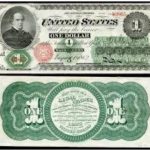 During the Civil War, money was made out of silver and gold. People would not have trusted any other form of money, but having enough silver and gold to make that money wasn’t always easy. The Northern states needed money, and they knew they had to make it, but Congress and others were concerned for the economy. If the government made money without silver or gold to back it, wouldn’t it eventually doom the economy? Most of us would call that counterfeit money, and yet our government is still doing this at times, more than we want to think about. Nevertheless, if you are part of the government, or even just someone who understands how such money can effect the economy, you might very likely be against something like the Legal Tender Act that was passed by the US Congress on this day, February 25, 1862.
During the Civil War, money was made out of silver and gold. People would not have trusted any other form of money, but having enough silver and gold to make that money wasn’t always easy. The Northern states needed money, and they knew they had to make it, but Congress and others were concerned for the economy. If the government made money without silver or gold to back it, wouldn’t it eventually doom the economy? Most of us would call that counterfeit money, and yet our government is still doing this at times, more than we want to think about. Nevertheless, if you are part of the government, or even just someone who understands how such money can effect the economy, you might very likely be against something like the Legal Tender Act that was passed by the US Congress on this day, February 25, 1862.
This was a huge step. Prior to this time, the money was real money. It needed no proof that its value was real,  the people using it could see that for themselves. The United States didn’t have money that was basically an I.O.U. before that time. The problem was that they also had a war going on that cost a lot of money, and with people fighting the war, there were a lot less people to go out and look for gold and mine silver. It was a big problem, but the Civil War was extremely costly, and it had to be financed. The government had to face the fact that the supply of gold and silver was depleted. The Legal Tender Act was not a decision they came to lightly. They discussed every other option, including bonds. Once they settled on paper money, the Union government printed 150 million dollars in paper money…called greenbacks. The Confederate government had been printing money since the beginning of the war, which proved to be folly in the end, but I guess if the south had won, it would have gone the other way. Nevertheless, the bankers and financial experts predicted doom immediately, and many legislators worried that the money might collapse the infrastructure.
the people using it could see that for themselves. The United States didn’t have money that was basically an I.O.U. before that time. The problem was that they also had a war going on that cost a lot of money, and with people fighting the war, there were a lot less people to go out and look for gold and mine silver. It was a big problem, but the Civil War was extremely costly, and it had to be financed. The government had to face the fact that the supply of gold and silver was depleted. The Legal Tender Act was not a decision they came to lightly. They discussed every other option, including bonds. Once they settled on paper money, the Union government printed 150 million dollars in paper money…called greenbacks. The Confederate government had been printing money since the beginning of the war, which proved to be folly in the end, but I guess if the south had won, it would have gone the other way. Nevertheless, the bankers and financial experts predicted doom immediately, and many legislators worried that the money might collapse the infrastructure.
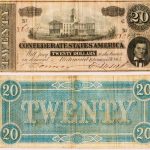
The greenbacks did not sink the economy. In fact, they worked very well. The government was able to pay its bills and, by increasing the money in circulation, the Northern economy actually improved. The greenbacks were legal tender, which meant that creditors had to accept them at face value. Life went on, but there were repercussions from the new money. In 1862, Congress was forced to pass an income tax and steep excise taxes, designed to cool the inflationary pressures created by the greenbacks. In 1863, another legal tender act was passed, and by the war’s end nearly half a billion dollars in greenbacks had been issued. The Legal Tender Act laid the foundation for the creation of a permanent currency in the decades after the Civil War.

 Have you ever wondered why US money is green…or mostly green, while the money of so many other countries is very colorful? How did paper money come about anyway? Actually, paper money has been around in the United States since the beginning, off and on anyway. Printing paper money has been a controversial practice over the years. In 1861, as a means of financing the American Civil War, the federal government began issuing paper money for the first time since the Continental Congress printed currency to help pay for the Revolutionary War. The earlier form of paper dollars, dubbed continentals, were produced in such high volume that they soon lost much of their value. Devaluing our money has been a long standing problem with paper money. It’s simply too easy to print more money than we have gold to back.
Have you ever wondered why US money is green…or mostly green, while the money of so many other countries is very colorful? How did paper money come about anyway? Actually, paper money has been around in the United States since the beginning, off and on anyway. Printing paper money has been a controversial practice over the years. In 1861, as a means of financing the American Civil War, the federal government began issuing paper money for the first time since the Continental Congress printed currency to help pay for the Revolutionary War. The earlier form of paper dollars, dubbed continentals, were produced in such high volume that they soon lost much of their value. Devaluing our money has been a long standing problem with paper money. It’s simply too easy to print more money than we have gold to back.
In the decades before the Civil War, private, state chartered banks printed the paper money. Not surprisingly, this resulted in a wide variety of denominations and designs. Apparently, there was no real decision on how this should look. I guess they weren’t really worried about counterfeiting at that time. The bills that came out in the 1860s became known as greenbacks, because their backsides were printed in green ink. This ink was used as an anti-counterfeiting measure used to prevent photographic knockoffs, since the cameras of the time could only take pictures in black and white. I guess that counterfeiting had become a problem in the earlier years after all. And as we all know, the new scanners continue to improve the possibility of counterfeiting, making watermarks and security strips necessary too. And they have also added color to the money these days.
In 1929, the federal government decided that the paper money was too expensive to print, so in an effort to cut costs, they shrunk the size of all paper money. At the same time, they standardized the designs for each denomination, which made it easier for people to tell the difference between real and counterfeit bills. The new, more compact bills continued to be printed in green ink, because according to the US Bureau of Printing and Engraving, the ink was readily available and durable. They also thought that the color green represented stability. Today, there is some $1.2 trillion in coins and paper money in circulation in America. It costs about 5 cents to produce every $1 bill and around 13 cents to make a $100 bill, the highest denomination currently in 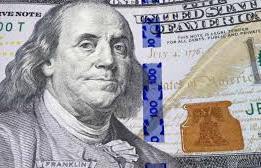
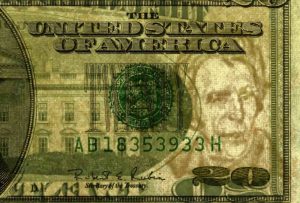 circulation. Don’t ask me why the difference, I would have expected them to be pretty much the same cost to manufacture. The estimated life span of a $1 bill is close to six years, while a $100 bill typically lasts 15 years, which makes sense to me, because we don’t use the $100 bill nearly as much. The $50 bill has the shortest average life span, at 3.7 years, and I would have expected the shortest lifespan to be the $1 bill, because we us those all the time.
circulation. Don’t ask me why the difference, I would have expected them to be pretty much the same cost to manufacture. The estimated life span of a $1 bill is close to six years, while a $100 bill typically lasts 15 years, which makes sense to me, because we don’t use the $100 bill nearly as much. The $50 bill has the shortest average life span, at 3.7 years, and I would have expected the shortest lifespan to be the $1 bill, because we us those all the time.

